Have you ever written a blog post that didn’t show up on Google, even though you worked really hard on it? Or maybe your article got visitors, but no one stayed long enough to read or take action?
That’s where SEO copywriting helps.
SEO copywriting means writing content that helps audiences and helps search engines understand what your page is about. It’s about creating useful, easy-to-read articles that answer questions visitors are searching for online.
In this post, I’ll discuss the SEO copywriting process in detail, which will connect your content with your readers. So, without any further ado, let’s get started.
Table Of Contents
1 Why SEO Copywriting is Important?
When you write online, your goal is usually two things: you want the audience to find your content, and you want them to take action after reading it. SEO copywriting helps you do both.
If you only focus on writing what sounds good, your article might be great to read, but it won’t show up in search results. And if you only focus on adding keywords, visitors might find your page, but they’ll leave quickly because it feels robotic. SEO copywriting keeps the balance between the two.
For instance, our tutorials are detailed and filled with examples, but they’re also written in a way that keeps you reading. You’ll notice simple sentences, short paragraphs, and lots of subheadings; that’s all part of good SEO copywriting.
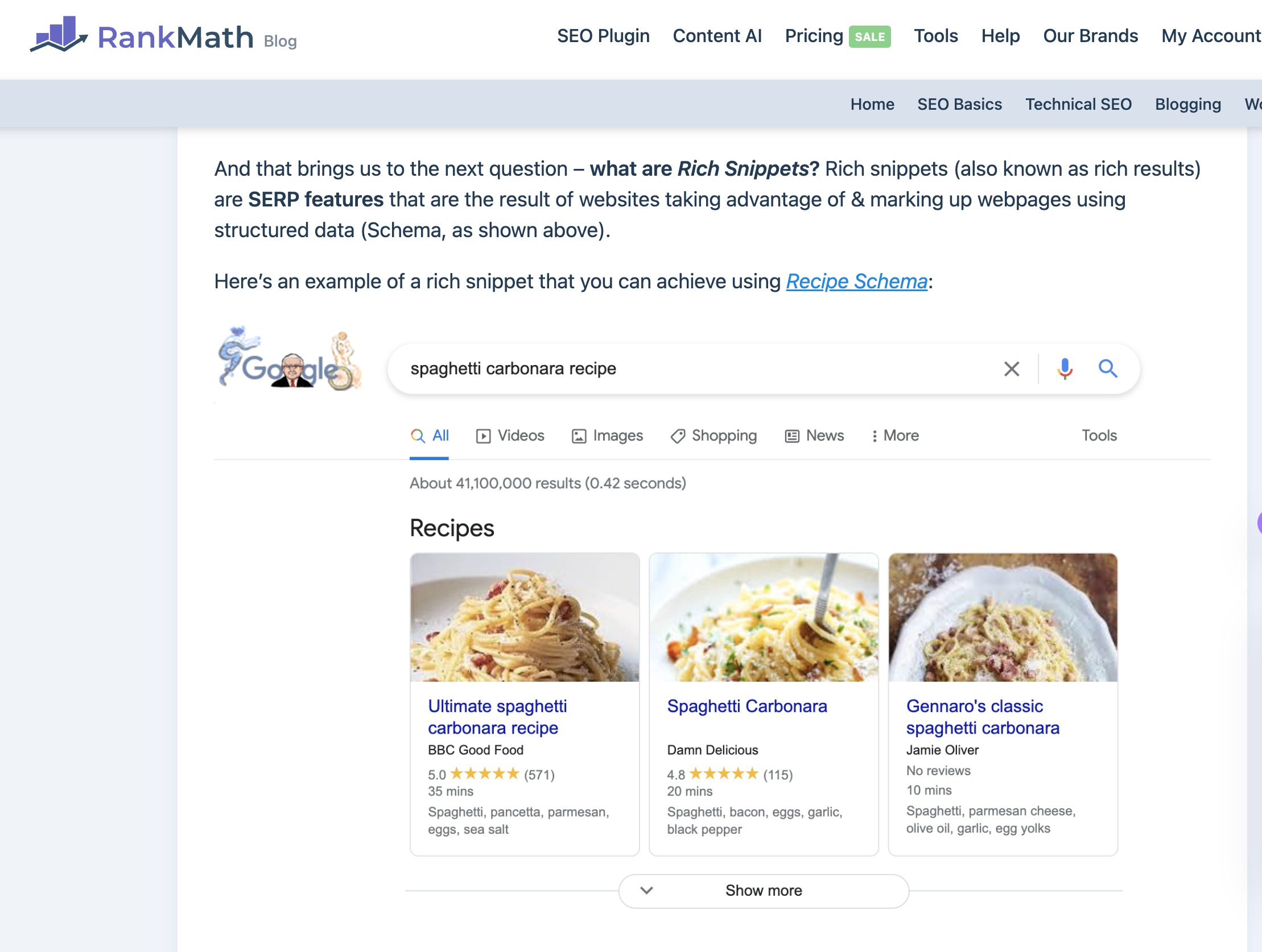
When you write this way, a few great things happen:
- More visitors can find your content through Google.
- Readers stay longer on your page because it’s easy to follow.
- You build trust and authority, which helps turn readers into customers.
SEO copywriting is what helps your words work harder. It gives your content the power to attract visitors, keep them interested, and guide them toward the next step, whether that’s subscribing, buying, or just remembering your website.
2 The SEO Copywriting Process
Good SEO copy doesn’t happen by accident. It’s not about typing fast, adding a few keywords, and hitting publish.
It’s a step-by-step process that helps you create content that’s both useful and visible online.
Think of SEO copywriting as a structured journey with three clear stages: Research, Drafting, and Editing.
Each stage plays a different role, but together, they help you write content that ranks well and feels natural to read.
- Research – This is where everything begins. You learn what your audience is searching for, what problems they’re trying to solve, and which keywords match their intent. By understanding this before you write, you’ll know exactly what your content should cover and how to make it helpful.
- Drafting – Once your plan is ready, it’s time to start writing. Here, your goal is to turn your research into a clear, engaging piece of content. You write in a way that flows smoothly, uses keywords naturally, and keeps the reader interested from start to finish.
- Editing – This is where you polish your work. You fix grammar issues, improve readability, and make sure your content is fully optimized for SEO. You check if it’s easy to read on both desktop and mobile, if your links work, and if your message is clear.
Following these steps makes your writing process more organized and effective. Instead of guessing what works, you’ll have a clear roadmap that takes your content from an idea to a finished piece ready to perform on Google.
In the next sections, we’ll look at each stage of SEO copywriting, starting with how to research your keywords, audience, and topics before writing a single word.
3 Phase 1: Research and Preparation
Before you start writing, it’s important to slow down and do your homework. SEO copywriting isn’t just about putting words on a page; it’s about writing for visitors who use search engines to find answers.
3.1 Understand Your Audience
Start by figuring out who you’re writing for. What are their goals? What problems are they trying to solve? How do they search for information online?
You can use tools like Google Analytics, social media insights, or even customer feedback to learn more about your readers.
When you understand your audience’s mindset, you can write in a way that feels helpful and personal, not just optimized for search engines.
3.2 Keyword and Topic Research
Once you know your audience, the next step is to figure out what they’re searching for. Use keyword tools like Google Keyword Planner to discover the words and phrases they use.
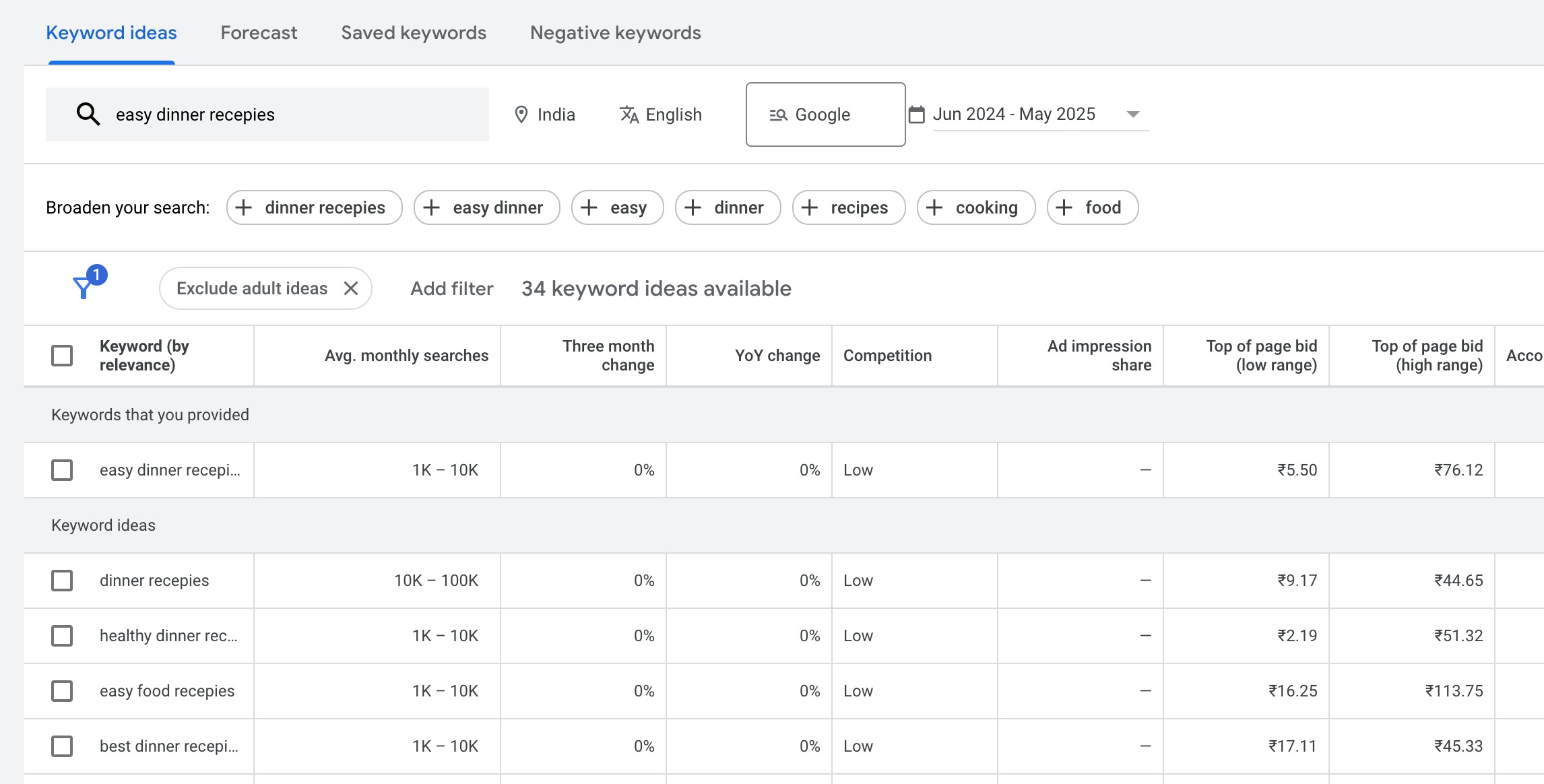
Don’t just pick keywords because they have high search volume. Instead, think about search intent, what the audience really wants when they type a query.
For instance:
- Someone searching for the best running shoes for beginners wants product recommendations.
- Someone searching for how to choose running shoes wants guidance and tips.
With Rank Math PRO’s Search Intent feature, you can easily align your content with the correct search intent. The Show Intent label beside your primary keyword instantly displays its intent, helping you optimize effectively. Simply drag another keyword to the first position to check its intent.
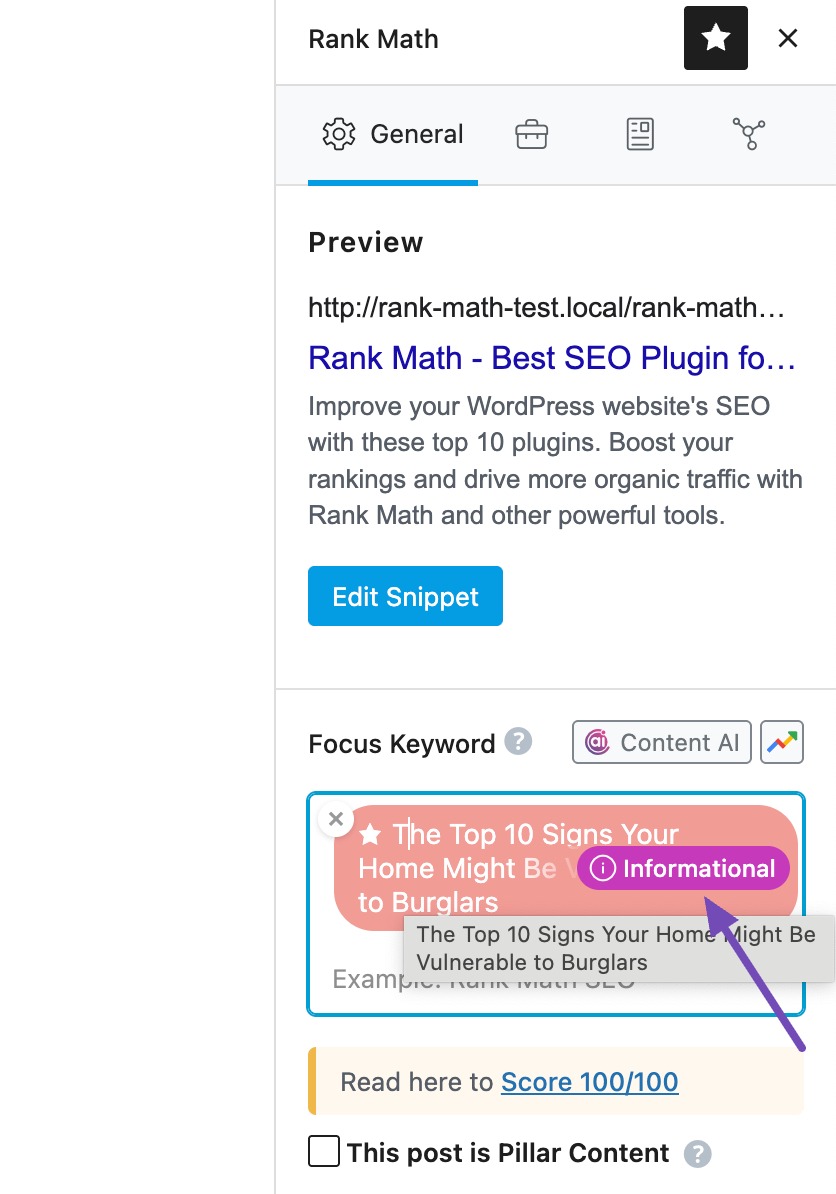
Mix primary keywords (main topics) with secondary ones (related ideas) naturally in your writing. It should sound smooth and conversational, not stuffed with keywords.
3.3 Analyze Competitors
Take some time to look at the top-ranking pages for your target keyword. What topics do they cover? How do they organize their information? What types of visuals or examples do they use?
Then, look for gaps, things they didn’t explain clearly or topics they didn’t include. That’s your chance to create something better and more helpful.
For example, if other articles list SEO tips without showing examples, you can include screenshots or case studies to stand out.
Refer to our dedicated tutorial on finding competitors for any website.
3.4 Plan Your Content Structure
Before you begin writing, make a quick outline of your post. List your headings, subheadings, and the main points you want to include under each.
A good structure keeps your content clear and easy to follow, for both readers and search engines. You don’t need to make it fancy. A simple outline like this works perfectly:
- Introduction
- Main topic or idea
- Supporting details and examples
- Conclusion and call-to-action
Once you’ve done this prep work, you’ll have everything you need to start writing with confidence and purpose.
Refer to our dedicated tutorial on website structure that encourages your audience to stay on your site for long.
4 Phase 2: Writing the Copy
Now that you’ve done your research, it’s time to bring your ideas to life through writing. This is where you turn your plan into something that connects with readers and performs well on search engines.
The key is balance, writing for humans first, and optimizing for SEO naturally.
4.1 Write a Strong Title and Introduction
Your title is the first thing visitors see, so make it count. It should grab attention, clearly show what your post is about, and include your main keyword. For example, instead of saying SEO Tips, try 10 Simple SEO Tips to Boost Your Website Traffic.
You can use Rank Math’s Content AI Post Title tool to get smart headline suggestions based on your post brief. It helps you come up with options that balance creativity and SEO.
The primary advantage of using AI tools is time savings. In fact, 71% of users identify it as their top benefit.
Ensure that you’ve enabled the Content AI module by navigating to Rank Math SEO → Dashboard → Modules from your WordPress dashboard. You can then locate 40+ AI tools, as shown below.

Select the Post Title AI tool from the list of available tools and enter a topic brief, as shown below.
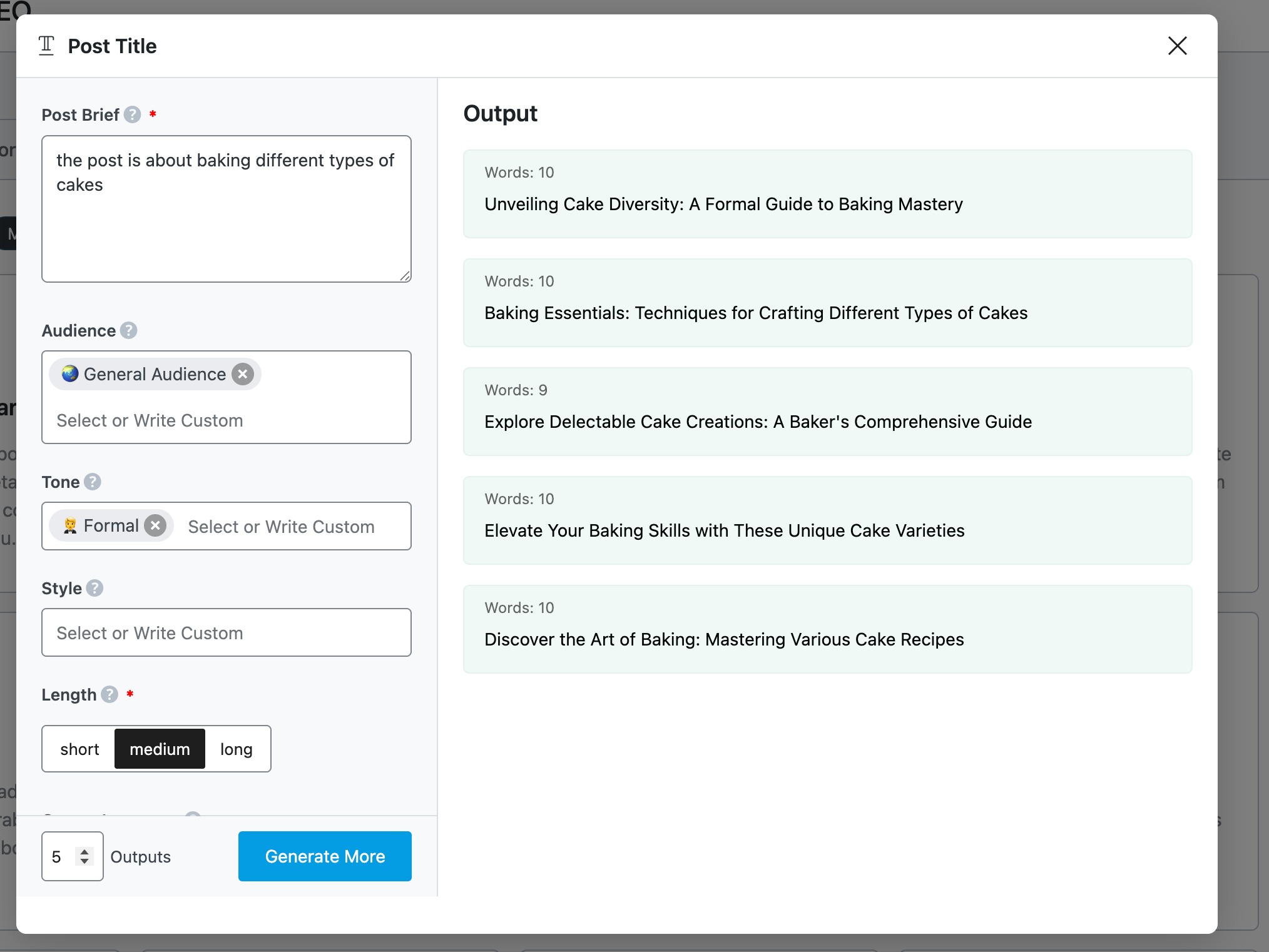
Once you’ve nailed the title, move to your introduction. Start with a hook, a question, a bold statement, or a relatable situation. Tell readers what they’ll learn and why it’s worth their time.
Rank Math’s Introduction AI tool can help you write compelling openings that sound natural and are aligned to your topic.
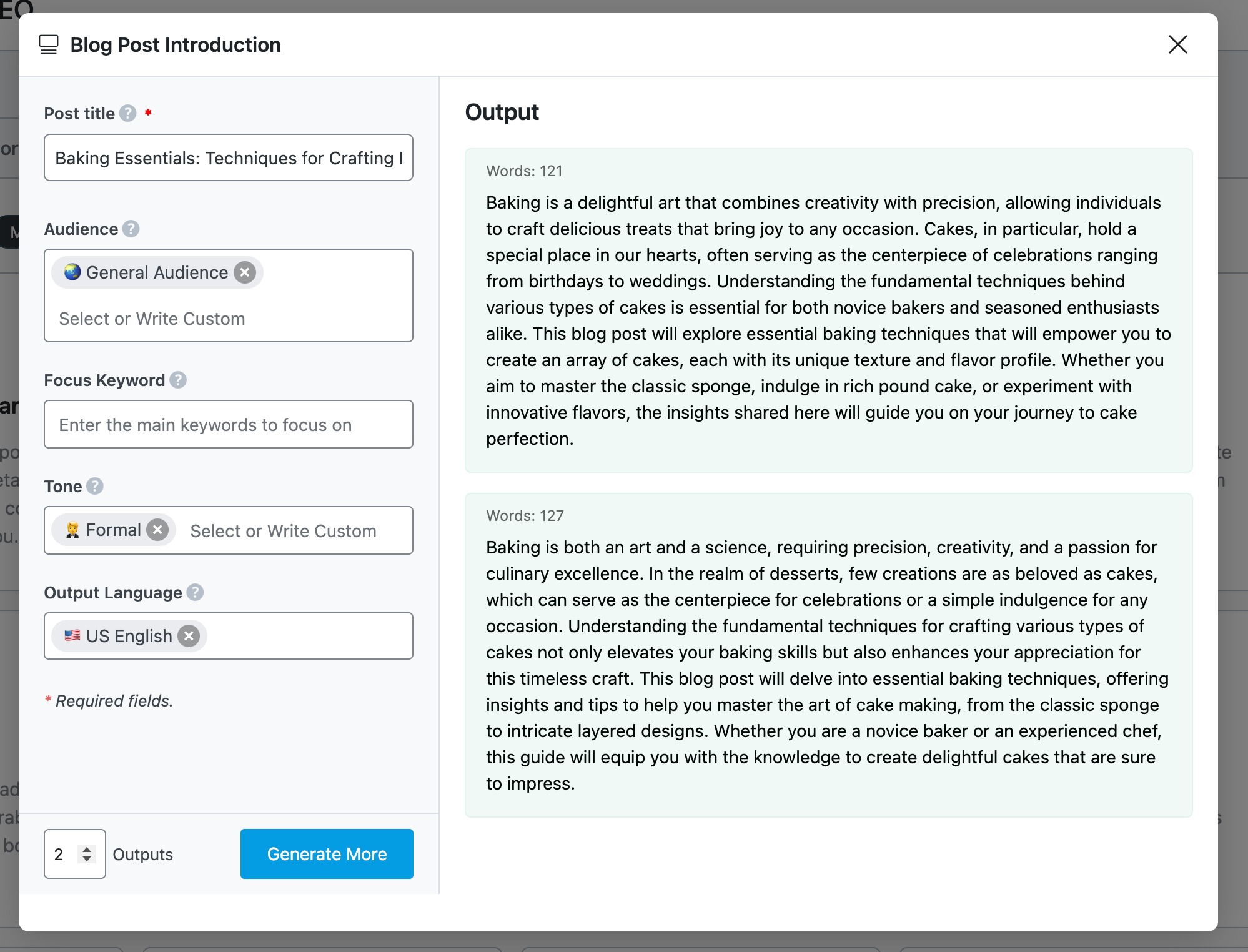
4.2 Use a Natural, Conversational Tone
Write as if you’re having a friendly chat with your reader. Use simple words and short sentences. You don’t need to sound like a professor, just be clear and helpful.
Avoid stuffing keywords or using technical jargon unless it’s necessary. For example, instead of writing, use keyword optimization strategies, say, use the right keywords in your content.
This approach makes your writing feel more genuine and keeps readers hooked.
Refer to our dedicated tutorial on establishing tone in writing and engaging your audience.
4.3 Keep Readers Engaged
Visitors often skim online content, so make your writing easy to read and visually inviting. Use short paragraphs, bullet points, and clear subheadings to break up large blocks of text.
You can also use Rank Math’s Content AI Blog Post Outline tool to plan your section structure before writing. It gives you topic suggestions, heading ideas, and even recommended questions to answer.
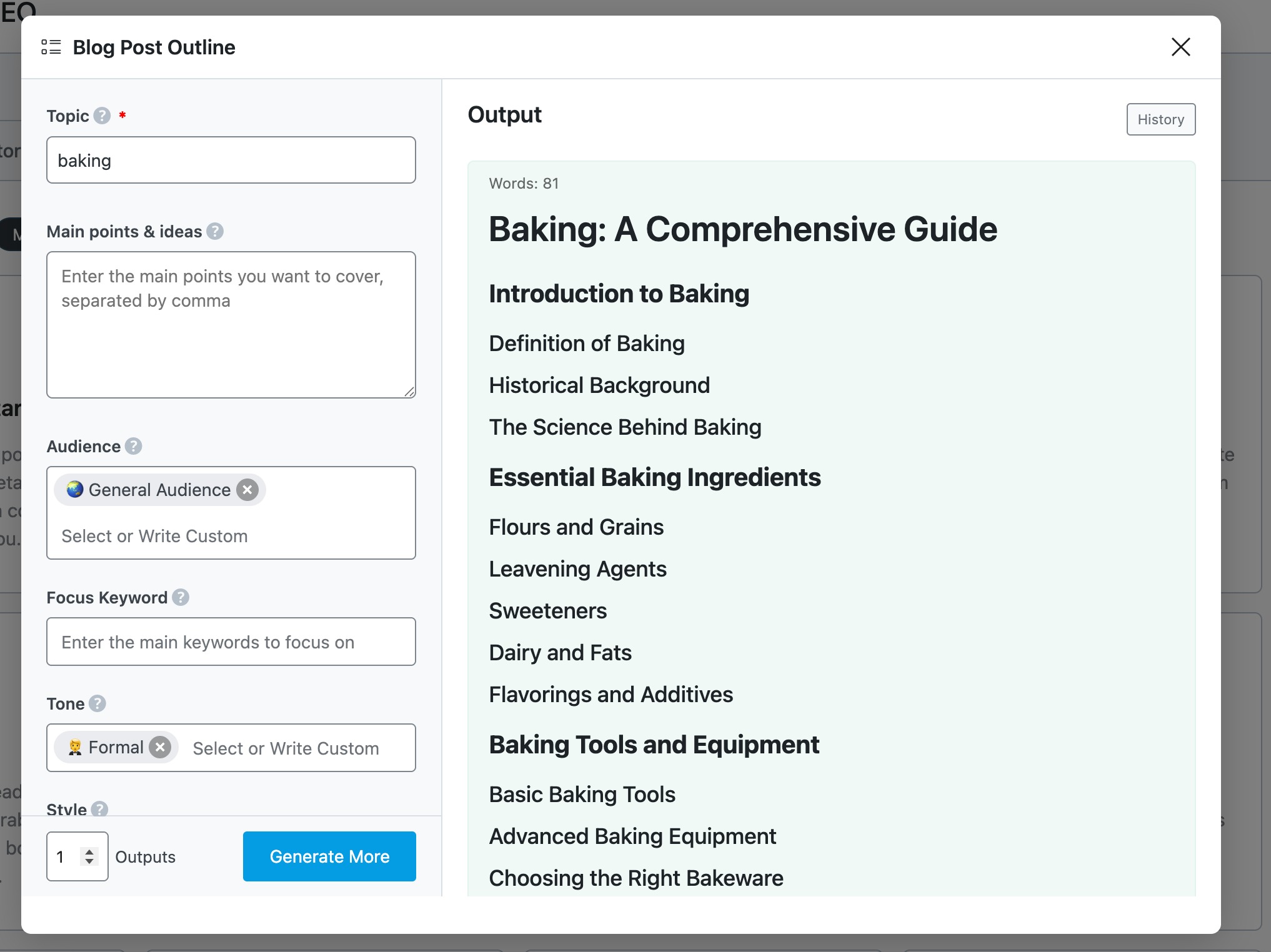
For instance, if you’re writing about email marketing, share an example of how tweaking a subject line improved open rates, it makes your advice more believable and useful.
4.4 Optimize While Writing
Good SEO writing doesn’t mean adding keywords everywhere; it’s about using them naturally. Include your main keyword in your title, introduction, and a few times in the body, but make sure it fits the sentence naturally.
Use internal links to connect to your other blog posts and external links to reliable sources. This not only improves SEO but also builds trust with your readers.
Keep your sentences short and your ideas clear; both readers and search engines love scannable content.
Rank Math can guide you in real-time by showing how well your content aligns with SEO best practices. It checks readability, keyword placement, and related terms you can include to boost your relevance.
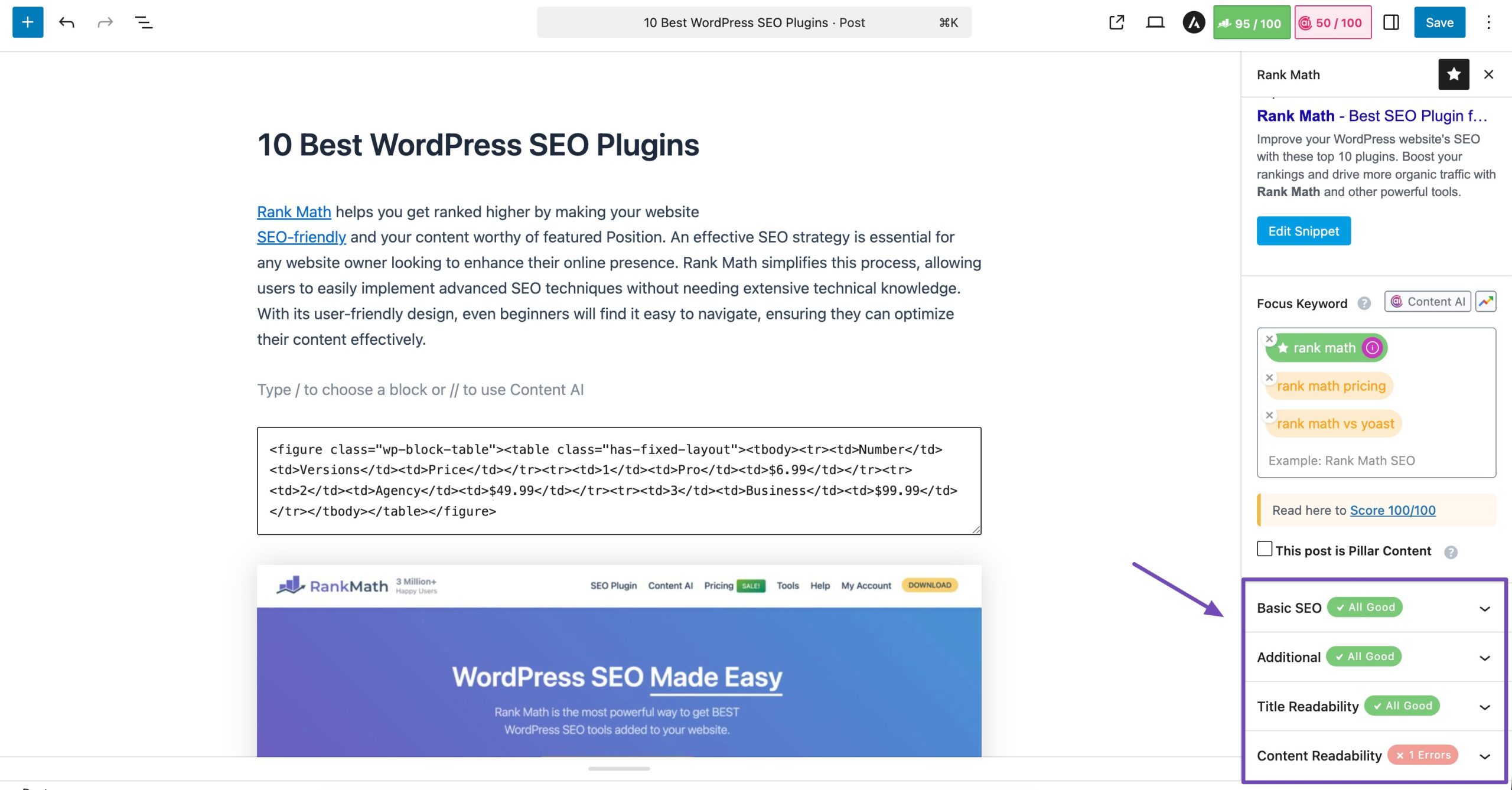
4.5 Write for Conversions
Every piece of content should have a goal; maybe you want readers to subscribe, download something, or check out your service. Add calls to action (CTAs) that guide them toward that goal.
For example:
- Want to learn more? Download our free SEO checklist.
- Start your free trial today and see how it works.
Also, anticipate questions or doubts your readers might have and address them. This helps build trust and encourages action.
5 Phase 3: Editing and Optimization
You’ve written your draft, now it’s time to polish it. Editing and optimization make the difference between good content and great content.
This phase ensures your writing is clear, credible, and fully ready to perform well on search engines.
5.1 Check Readability
Start by making your content easy to read and understand. Even the most informative article won’t work if it feels heavy or confusing.
Use tools like Grammarly to simplify complex sentences, spot grammar issues, and tighten your writing. Aim for short paragraphs and natural flow.

Every sentence should serve a purpose; if it doesn’t, cut it. Ask yourself: Will my audience easily understand this point? If not, rewrite it in plain, friendly language.
You can also use Rank Math’s Content Readability suggestions, which help you create text that’s smooth for readers and search engines alike.
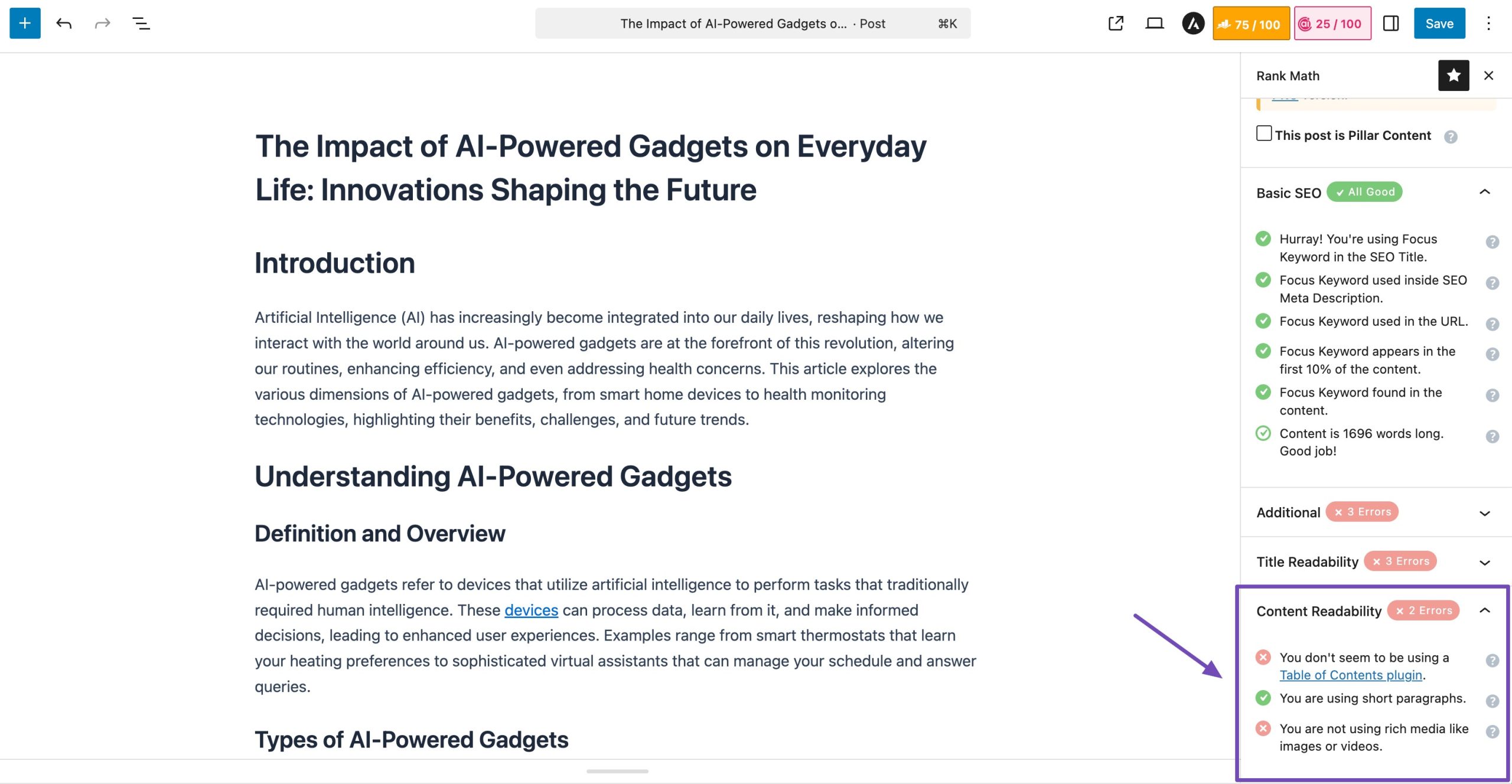
5.2 On-Page SEO Review
Once your content reads well, it’s time to make sure it’s fully optimized for SEO. This means refining the elements that help search engines understand your page better.
Check the basics:
- Title tag: Include your target keyword naturally
- Meta description: Write a short summary that encourages clicks
- URL: Keep it short and keyword-focused
- Image alt text: Describe what the image shows using relevant keywords
- Schema markup: Use Rank Math to easily add schema types like Article, FAQ, or HowTo so your content stands out in search results.
Refer to our dedicated tutorial on on-page SEO and optimize your content effectively.
5.3 Improve User Experience
SEO isn’t just about keywords; it’s also about how readers feel when they visit your page.
According to Google, your website should load in two to three seconds or less.
Check that your page loads quickly, looks great on mobile, and is easy to navigate. A slow or cluttered design can drive visitors away before they even start reading.
Check your site speed using the Google PageSpeed Insights tool. Simply enter your website’s URL, and it will provide you with a detailed analysis of your website’s performance, along with recommendations for improvement.
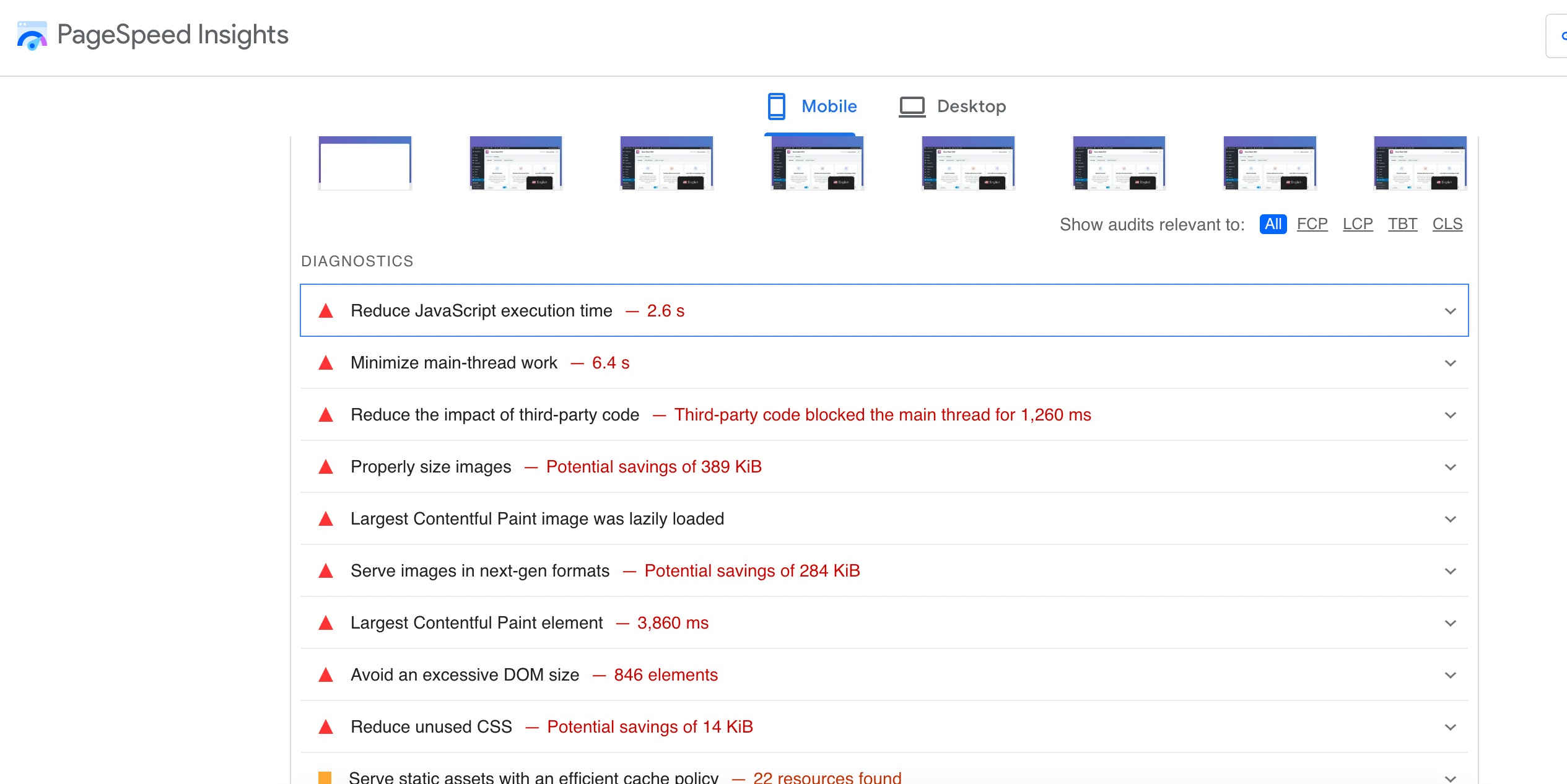
5.4 Proof of Expertise
Search engines value content that comes from real expertise, and readers do, too. Show your authority by including author bios, data sources, or case studies that support your points.

If you’re writing about SEO strategies, for instance, you can share how you improved a client’s traffic or link to verified statistics.
6 Advanced SEO Copywriting Techniques
Once you’ve mastered the basics, these advanced SEO copywriting techniques can help you write content that ranks higher, attracts more clicks, and keeps readers engaged.
6.1 Use People Also Ask Questions
When you search for something on Google, you often see a box titled People also ask. These questions show what users genuinely want to know, and they’re a goldmine for SEO copywriters.

You can include these questions and their answers directly in your content. It helps your post appear in featured snippets and makes it more valuable for readers.
For example, if your topic is email marketing, you can include:
- How often should you send marketing emails?
- What are the best email subject lines for engagement?
Answering these naturally within your post helps you find more search intent and build trust with your readers.
6.2 Write With Semantic Keywords
Instead of repeating the same keyword over and over, focus on semantic keywords, related terms and phrases that support your main topic.
For instance, if your main keyword is “SEO copywriting,” related terms can include “search intent,” “content optimization,” or “readability.” These help search engines understand your content better and show it for a wider range of searches.
Rank Math’s Content AI keyword suggestions make this easier by automatically recommending relevant keywords you can naturally include while writing.
When you choose USE KEYWORD IN Content, you’ll see another section below the important keywords, that would include the related keywords suggested by AI. You can prefer to use the recommended related keywords or ignore them.
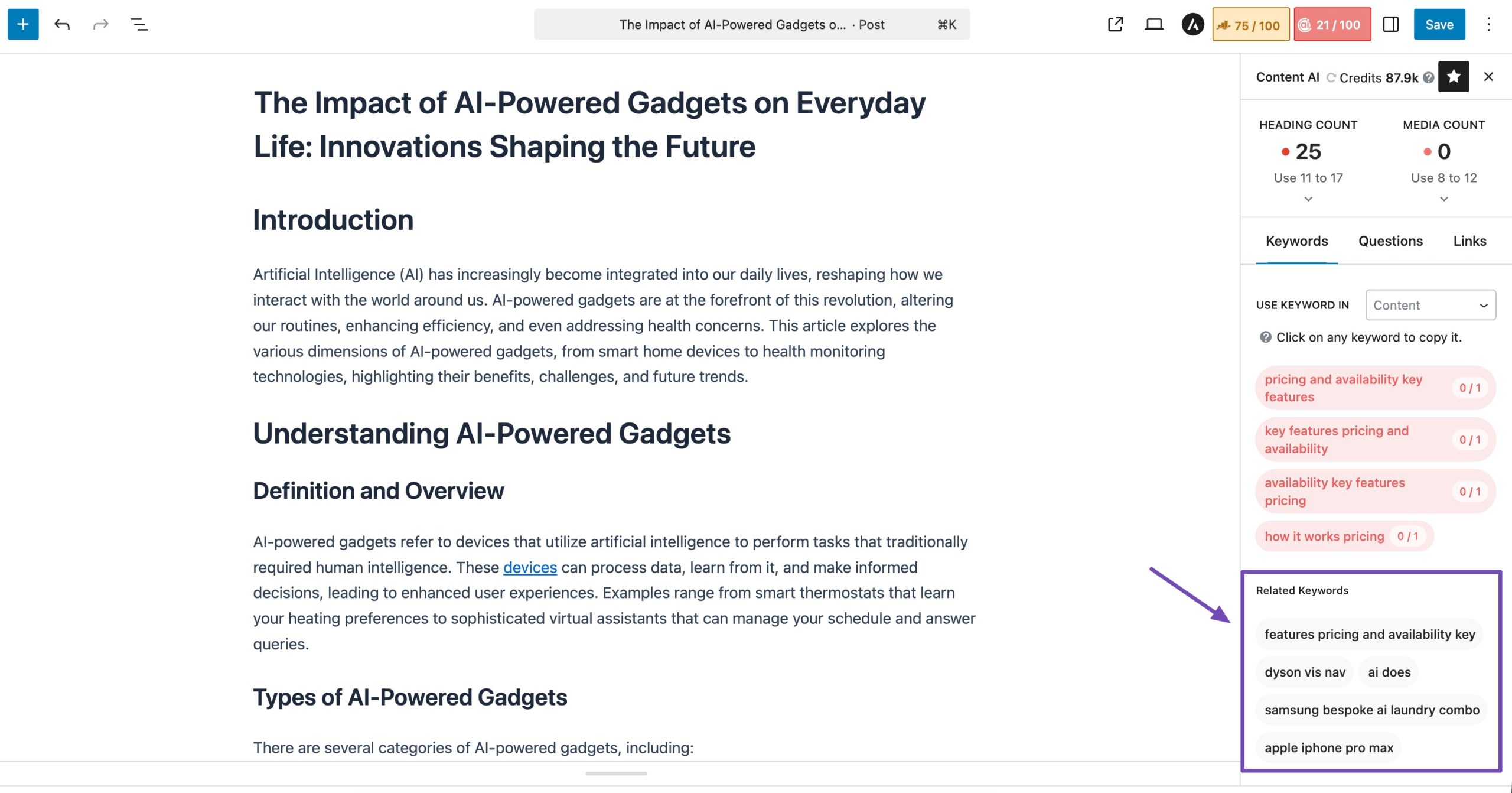
6.3 Update Older Posts Regularly
Your content shouldn’t be written once and forgotten. Search engines and readers both prefer fresh, accurate information.
Make it a habit to revisit old blog posts, update outdated data, fix broken links, and add new insights. This keeps your content relevant and can even give it a ranking boost.
7 Conclusion
SEO copywriting isn’t just about sprinkling keywords; it’s about writing content that search engines understand and humans love to read.
When you combine keyword strategy with emotional storytelling, clarity, and consistent updates, your content becomes both discoverable and memorable.
And with tools like Rank Math’s Content AI, you can simplify the process, from finding related keywords to crafting compelling titles, ensuring every piece of content you publish is optimized for both readers and search engines.
If you like this post, let us know by tweeting @rankmathseo.
